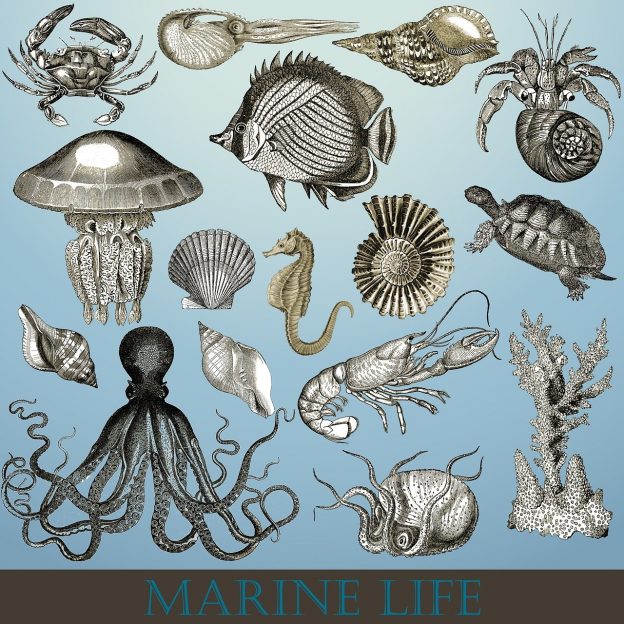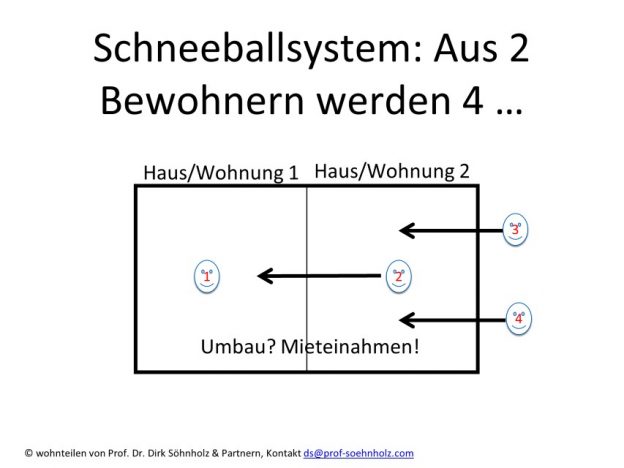New gender research illustration by Mohamed Hassan from Pixabay
New gender research: 16x new research on child labor, child bonus, climate models, green bonds, social returns, supply chain ESG, greenwashing, ESG bonifications, gender index, gender inheritance gap, inflation, investment risks and investment AI (# shows SSRN full paper downloads as of May 16th, 2024)
Social and ecological research in: New gender research
US child labor: (Hidden) In Plain Sight: Migrant Child Labor and the New Economy of Exploitation by Shefali Milczarek-Desai as of April 18th, 2024 (#164): “Migrant child labor pervades supply chains for America’s most beloved household goods including Cheerios, Cheetos, Lucky Charms, J. Crew, and Fruit of the Loom. Migrant children, some as young as twelve and thirteen, de-bone chicken sold at Whole Foods, bake rolls found at Walmart and Target, and process milk used in Ben & Jerry’s ice-cream. Most work grueling shifts, including overnight and over twelve-hour days, and some, working in extremely hazardous jobs such as roofing and meat processing, have died or suffered serious, permanent injuries. … many … are unaccompanied minors and have no choice but to work. … this paper charts a multifaceted course that might realistically address the predicament of migrant child workers who are precariously perched at the intersection of migration and labor“ (abstract).
New gender research: Is There Really a Child Penalty in the Long Run? New Evidence from IVF Treatments by Petter Lundborg, Erik Plug, and Astrid Würtz Rasmussen as of May 2nd, 2024 (#32): “The child penalty has been singled out as one of the primary drivers behind the gender gap in earnings. In this paper, we challenge this notion by estimating the child penalty in the very long run. For this purpose, we rely on … fertility variation among childless couples in Denmark to identify child penalties for up to 25 years after the birth of the first child. … we find that the first child impacts the earnings of women, not men. While the child penalties are sizable shortly after birth, the same penalty fades out, disappears completely after 10 years, and turns into a child premium after 15 years. … we even find that the birth of the first child leads to a small rise in the lifetime earnings of women” (p. 15/16).
New gender research: What Works in Supporting Women-Led Businesses? by Diego Ubfal as of April 30th, 2024 (#125): “This paper reviews evidence on interventions that can address the constraints faced by growth-oriented, women-led micro, small, and medium-sized enterprises (WMSMEs). … First, evidence of modest average treatment effects and treatment effect heterogeneity across various interventions suggests the need for better targeting and segmentation. Second, women-led firms face multiple constraints, and addressing them requires a package of multiple interventions“ (p. 20).
Climate model risks: The Emperor’s New Climate Scenarios – Limitations and assumptions of commonly used climate-change scenarios in financial services by Sandy Trust, Sanjay Joshi, Tim Lenton, and Jack Oliver as of July 4th, 2023: “Many climate-scenario models in financial services are significantly underestimating climate risk. … Real-world impacts of climate change, such as the impact of tipping points (both positive and negative, transition and physical-risk related), sea-level rise and involuntary mass migration, are largely excluded from the damage functions of public reference climate-change economic models. Some models implausibly show the hot-house world to be economically positive, whereas others estimate a 65% GDP loss or a 50–60% downside to existing financial assets if climate change is not mitigated, stating these are likely to be conservative estimates. … Carbon budgets may be smaller than anticipated and risks may develop more quickly. … We may have underestimated how quickly the Earth will warm for a given level of emissions, meaning we need to update our expectations as to how quickly risks will emerge. A faster warming planet will drive more severe, acute physical risks, bring forward chronic physical risks, and increase the likelihood of triggering multiple climate tipping points, which collectively act to further accelerate the rate of climate change and the physical risks faced. … Firms naturally begin with regulatory scenarios, but this may lead to herd mentality and ‘hiding behind’ Network for Greening the Financial System (NGFS) thinking, rather than developing an appropriate understanding of climate change. Key model limitations, judgements and choice of assumptions are not widely understood, as evidenced by current disclosures from financial institutions” (p. 6).
ESG investment research
Managed greenium: Determinants of the Greenium by Christoph Sperling, Roland Maximilian Happach, Holger Perlwitz, and Dominik Möst as of May 9th, 2024 (#23): “Environmental, social and governance (ESG) bonds can benefit from yield discounts compared to their conventional twins, a phenomenon known as the ‚greenium‘. … we examine five observable characteristics of corporate ESG bonds and their conventional twins for statistical differences in primary market yields and derive two overarching determinants from this” (abstract). “… two overarching determinants affecting the occurrence and magnitude of a greenium become apparent: transparent information disclosure and sustainable corporate management. Companies can actively enhance their greenium in the primary market and reduce debt financing costs by communicating clearly about the intended use of proceeds and aligning with ambitious sustainability goals” (p. 28).
Social return effects: Social Premiums by Hoa Briscoe-Tran, Reem Elabd, Iwan Meier, and Valeri Sokolovski as of April 30th, 2024 (#123): “Our analysis illuminates the impact of the S dimension of ESG on future stock returns. We find that the aggregate S score does not affect stock returns. However, the two main components of the S score exert significant, yet opposite, effects on returns. Specifically, higher human capital scores are associated with higher returns, aligning with previous research and suggesting that markets may not fully price in firms’ human capital. Conversely, higher product safety scores are associated with lower average returns, consistent with the risk-based explanation that firms with safer products exhibit safer cash flows, reduced risk, and therefore, lower expected returns” (p. 26). My comment: If social investments have similar returns as other investments, everything speaks for social investments.
ESG purchasing benefits: A Procurement Advantage in Disruptive Times: New Perspectives on ESG Strategy and Firm Performance by Wenting Li and Yimin Wang as of May 5th, 2024 (#29): “Drawing on the COVID-19 pandemic as a natural experiment, we define a firm’s resilience as its relatively superior financial performance during the pandemic. … The results reveal that increased ESG practices strengthen a firm’s resilience during disruptions: a 1% increase in ESG practice scores leads to a 0.215% increase in firms’ return on assets. We analyze the mechanisms driving this resilience effect and show that improved ESG practices are associated with reduced purchasing costs and higher profitability amid disruptions. … we provide robust evidence that ESG enhances operational congruency with suppliers, which becomes critical in securing a procurement advantage during severe external constraints. Contrary to popular belief, there is little evidence that the ESG improves price premiums during the disruption“ (abstract). My comment: My detailed recommendations for supplier evaluations and supplier engagement see Supplier engagement – Opinion post #211 – Responsible Investment Research Blog (prof-soehnholz.com)
NGOs and Greenwashing: Scrutinizing Corporate Sustainability Claims. Evidence from NGOs’ Greenwashing Allegations and Firms’ Responses by Janja Brendel, Cai Chen, and Thomas Keusch as of April 9th, 2024 (#107): “We find that advocacy NGOs (Sö: Non-Governmental Organizations) increasingly campaign against greenwashing, targeting predominantly large, publicly visible firms in the consumer-facing and oil and gas industries. These campaigns mostly accuse firms of making misleading or false statements in communication outlets such as product labels, advertisements, and public relations campaigns about companies’ impacts on climate change and consumer health. Shareholders and the media react to NGO campaigns, especially when they allege greenwashing of material environmental or social performance dimensions. Finally, firms facing environment-related greenwashing allegations disclose less environmental information in the future, while companies criticized for climate-related greenwashing reduce future greenhouse gas emissions“ (abstract). My comment see Neues Greenwashing-Research | CAPinside
New gender research: Who Cares about Investing Responsibly? Attitudes and Financial Decisions by Alberto Montagnoli and Karl Taylor as of April 30th, 2024 (#25): “Using the UK Financial Lives Survey data … our analysis reveals that, firstly, individual characteristics have little explanatory power in terms of explaining responsible investments, except for: education; gender; age; and financial literacy. Secondly, those individuals who are interested in future responsible investments are approximately 7 percentage points more likely to hold shares/ equity, and have around 77% more money invested in financial assets (i.e. just under twice the amount)“ (abstract).
New gender research: Index Inclusion and Corporate Social Performance: Evidence from the MSCI Empowering Women Index by Vikas Mehrotra, Lukas Roth, Yusuke Tsujimoto, and Yupana Wiwattanakantang as of May 14th, 2024 (#48): “… we focus on the years surrounding the introduction of the MSCI Empowering Women Index (WIN), in which membership is based on a firm’s gender diversity performance in the workforce. … firms ranked close to the index inclusion threshold enhance their proportion of women in the workforce following the WIN inception compared to control firms that are distant from the inclusion threshold. Notably, these improvements are not accompanied by a reduction in male employees, … we observe that the enhancement of women’s representation in the workforce predominantly occurs in management positions, rather than at the rank-and-file positions, which remain largely unchanged. Additionally, there is evidence of a cultural shift within these firms, as indicated by a reduction in overtime and a higher incidence of male employees taking parental leaves in the post-WIN period. Moreover, WIN firms experience an increase in institutional ownership without any discernible decline in firm performance or shareholder value …” (p. 26).
Impact investment research
ESG bonus leeway: ESG & Executive Remuneration in Europe by Marco Dell’Erba and Guido Ferrarini as of May 6th, 2024 (#160): “… a qualitative and empirical analysis of the ways in which the major 300 largest corporations by market capitalization in Europe (from the FTSEurofirst 300 Index) implement ESG factors in their remuneration policies. … Few metrics are clearly measurable, and there is a general lack of appropriate metrics and targets” (p. 36/37). My comment see Wrong ESG bonus math? Content-Post #188 – Responsible Investment Research Blog (prof-soehnholz.com)
Bank net zero failure: Business as Usual: Bank Net Zero Commitments, Lending, and Engagement by Parinitha (Pari) Sastry, Emil Verner, and David Marques-Ibanez as of April 23rd, 2024 (#876): “This paper is the first attempt to quantify whether banks with a net zero pledge have made meaningful changes to their lending behavior. … we find that net zero lenders have not divested from emissions-intensive firms, in mining or in the sectors for which they have set targets. This holds both for borrowing firms in the eurozone, as well as across the globe. We also find limited evidence that banks reallocate financing towards low-carbon renewables projects within the power generation sector, casting doubt on within-sector portfolio reallocation. Further, we do not find evidence for engagement. Firms connected to a net zero bank are no more likely to set decarbonization targets, nor do they reduce their carbon emissions“ (p. 35).
Other investment research: in New gender research
New gender research: Wealth creators or inheritors? Unpacking the gender wealth gap from bottom to top and young to old by Charlotte Bartels, Eva Sierminska, and Carsten Schroeder as of Apri 28th, 2024 (#157): Using unique individual level data that oversamples wealthy individuals in Germany in 2019, we find that women and men accumulate wealth differently. Transfer amounts and their timing are an important driver of these differences: men tend to inherit larger sums than women during their working life, which allows them to create more wealth. Women often outlive their male partners and receive larger inheritances in old age. Yet, these transfers come too late in order for them to be used for further accumulation and to start a business. Against this backdrop, the average gender wealth gap underestimates the inequality of opportunity that men and women have during the active, wealth-creating phase of the life course” (p. 7).
Inflation ignorants: Don’t Ignore Inflation Ignorance: An Experimental Analysis of the Degree of Money Illusion in Individual Decision Making by Nicole Branger´, Henning Cordes, and Thomas Langer as of Dec. 30th, 2024 (#18): “Money illusion refers to the tendency to evaluate economic transactions in nominal rather than real terms. One manifestation of this phenomenon is the tendency to neglect future inflation in intertemporal investment decisions. Empirical evidence for this “inflation ignorance” is hard to establish due to the host of factors that simultaneously change with the inflation rate. … We find money illusion to be substantial – even in experimental settings where the bias cannot be driven by a lack of diligence, arithmetic problems, or misunderstandings of inflation. Our findings contribute to understanding various anomalies on the individual and market level, such as insufficient savings efforts or equity mispricing“ (abstract).
Active risk: Sharpe’s Arithmetic and the Risk Matters Hypothesis by James White, Vladimir Ragulin, and Victor Haghani from Elm Wealth as of Dec. 20th, 2023 (#140): “… the authors present … the „Risk Matters Hypothesis“ (RMH), which asserts that the average risk-adjusted excess return across all active portfolios will be greater than the risk-adjusted excess return of the market portfolio, before accounting for fees and trading costs” (abstract).
AI for the big guys only? A Walk Through Generative AI & LLMs: Prospects and Challenges by Carlos Salas Najera as of Dec. 20th, 2023 (#68): “Generative AI has firmly established its presence, and is poised to revolutionise various sectors such as finance. Large Language Models (LLMs) are proving pivotal in this transformation according to their recent impressive performances. However, their widespread integration into industries might only lead to gradual progress. The investment sector faces challenges of inadequate expertise and notably, the substantial costs associated with inhouse model training. Consequently, investment enterprises will confront the choice of leveraging foundational models, customisable variants, or insights from NLP vendors who remain well-versed in the latest advancements of LLMs” (p. 9). My comment: See How can sustainable investors benefit from artificial intelligence? – GITEX Impact
………………………………………………………………………………………………………………………………..
Werbehinweis
Unterstützen Sie meinen Researchblog, indem Sie in meinen globalen Small-Cap-Anlagefonds (SFDR Art. 9) investieren und/oder ihn empfehlen. Der Fonds konzentriert sich auf die Ziele für nachhaltige Entwicklung (SDG) und verwendet separate E-, S- und G-Best-in-Universe-Mindestratings sowie ein breites Aktionärsengagement bei derzeit 26 von 30 Unternehmen: FutureVest Equity Sustainable Development Goals R – DE000A2P37T6 – A2P37T und My fund – Responsible Investment Research Blog (prof-soehnholz.com)










